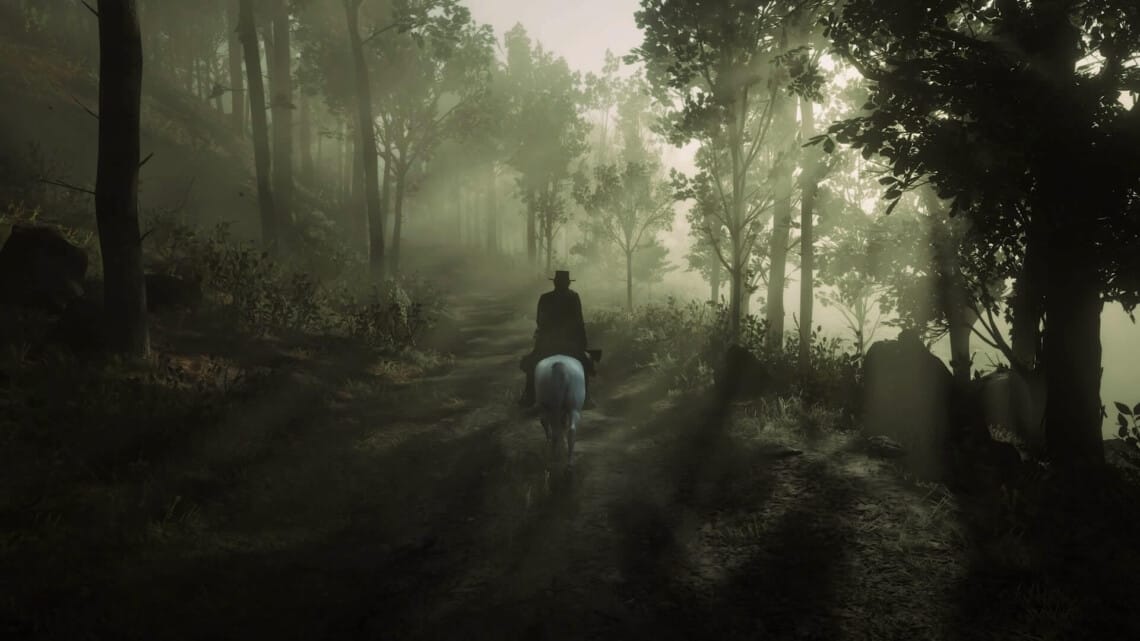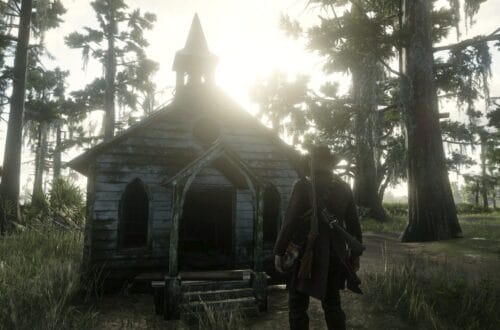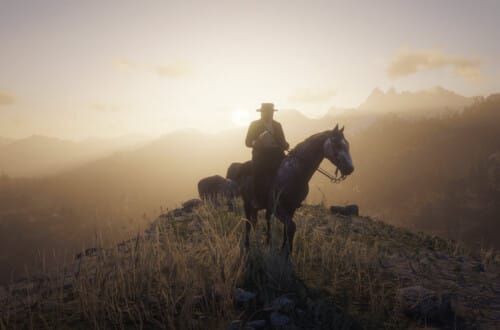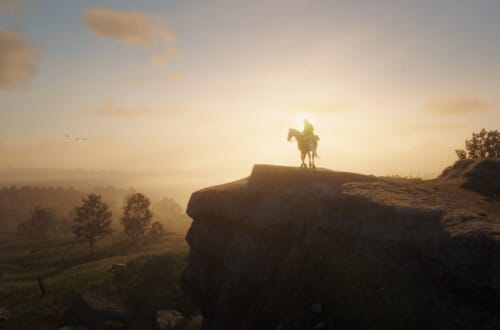Red Dead Redemption 2 gives the player visual clues that Arthur Morgan and Micah Bell III are opposite in nature.
All articles on this site feature detailed discussion of literary allusions in Red Dead Redemption 2, and as such contain unmarked major and minor spoilers for the game, and occasionally the eventual fates of some characters in Red Dead Redemption. Read at your own risk.
In Arthurian legend, during the quest for the grail, the knights often have dreams, visions, or strange adventures that they relate to religious figures, who then interpret their meanings (which is not dissimilar to the way Sister Calderón gives Arthur guidance). In one instance in Sir Thomas Malory’s Morte Darthur, Sir Bors tells an abbot about odd events that have befallen him. The abbot’s explanation of what they symbolized illuminates an aspect of Red Dead Redemption 2:
And by the black bird might ye understand Holy Church, which sayeth ‘I am black,’ but he is fair. And by the white bird may men understand the fiend; and I shall tell you how the swan is white without and black within: it is hypocrisy, which is without yellow or pale, and seemeth, without, the servants of Jesu Christ, but they be within so horrible of filth and sin, and beguile the whole world.
366
Helen Cooper explains that “I am black” refers to Song of Songs 1:51, “I am black but comely,” which was typically believed to refer to the Church (554). What Sir Bors has experienced is an illustration of a discrepancy between the exterior and interior natures of things. Appearances are deceiving.
Arthur Morgan and Micah Bell as Opposites
It’s often been noted that Red Dead Redemption 2 inverts the Western genre trope in which the good guy wears a white hat, and the bad guy a black one. In fact — unlike Dutch Van de Linde and Colm O’Driscoll, who dress nearly identically — Arthur Morgan and Micah Bell III’s entire outfits are near negative images of each other. Arthur wears a dark brown hat, tan jacket, light blue shirt, and black pants. Micah wears a white hat, black jacket, dark red shirt, and tan pants. The colors aren’t exact opposites, but close to it — Arthur’s jacket and Micah’s pants aren’t pure white. Dark red and cyan are opposite each other on the color wheel and the shade of Arthur’s shirt doesn’t match this exactly, but it’s a neighbor. This is fitting, since Arthur and Micah aren’t complete opposites. After all, they’re both violent criminals, and they both follow Dutch.
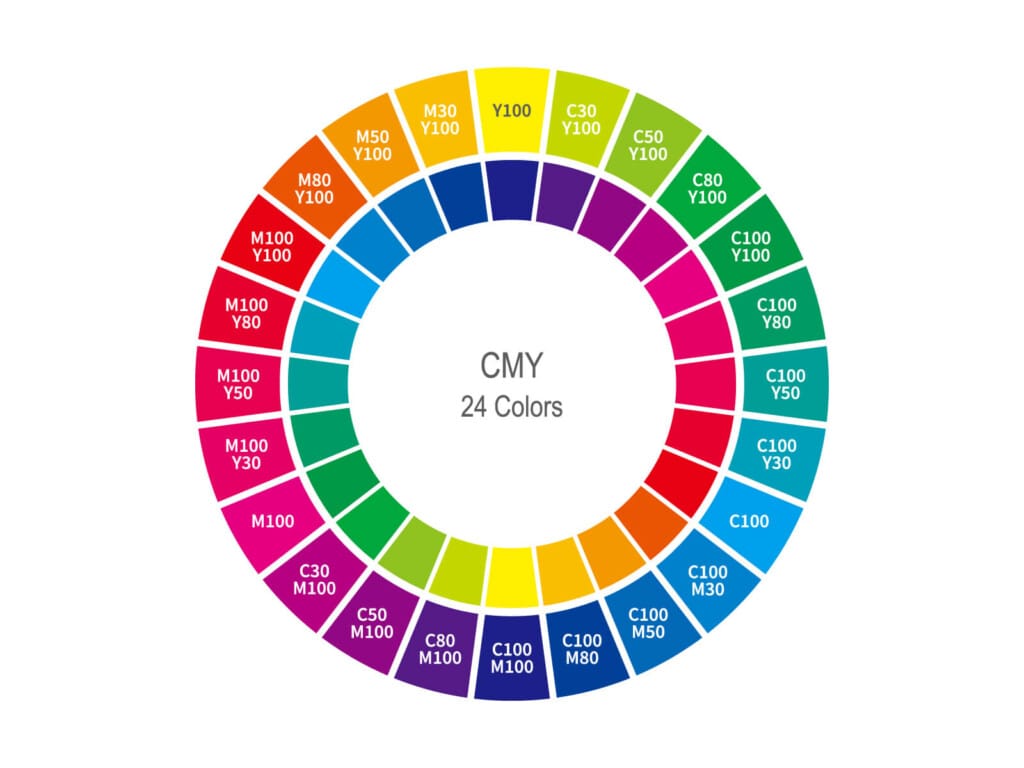
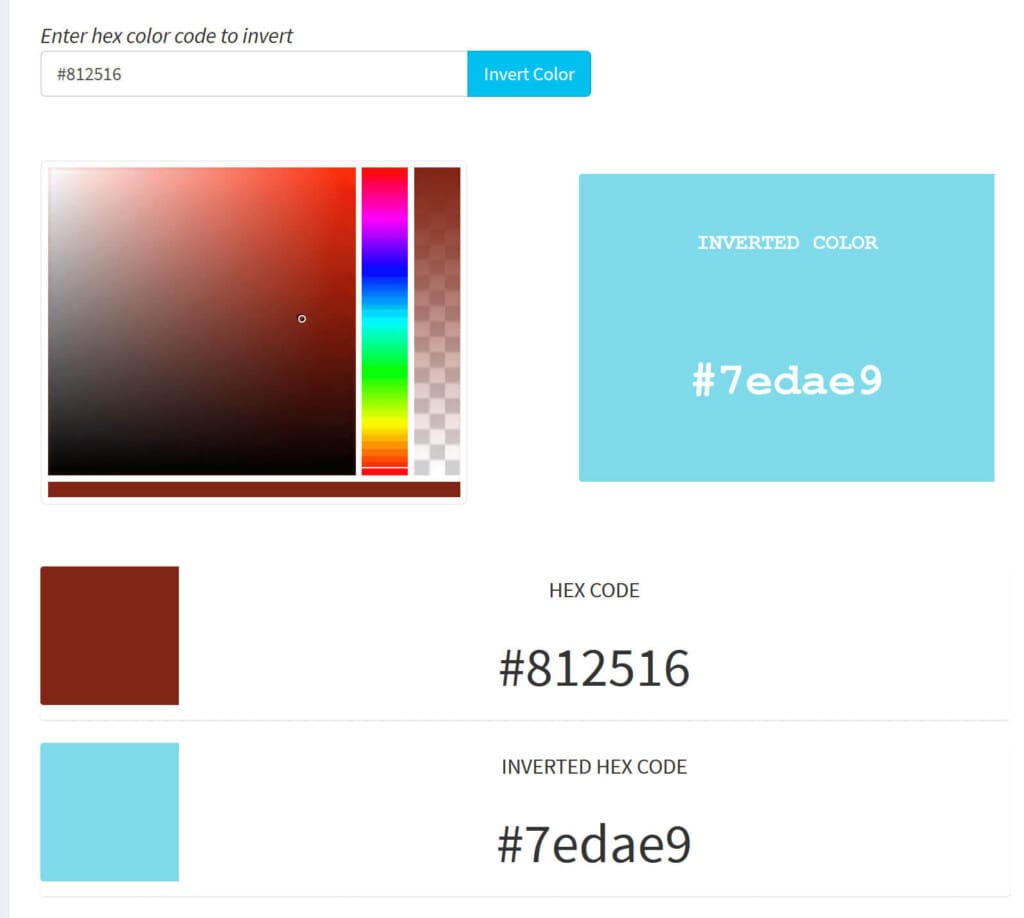
The effect is furthered by the fact that while Arthur and Hosea Matthews sometimes double each other’s movements, in some scenes, Arthur and Micah mirror each other’s positions.
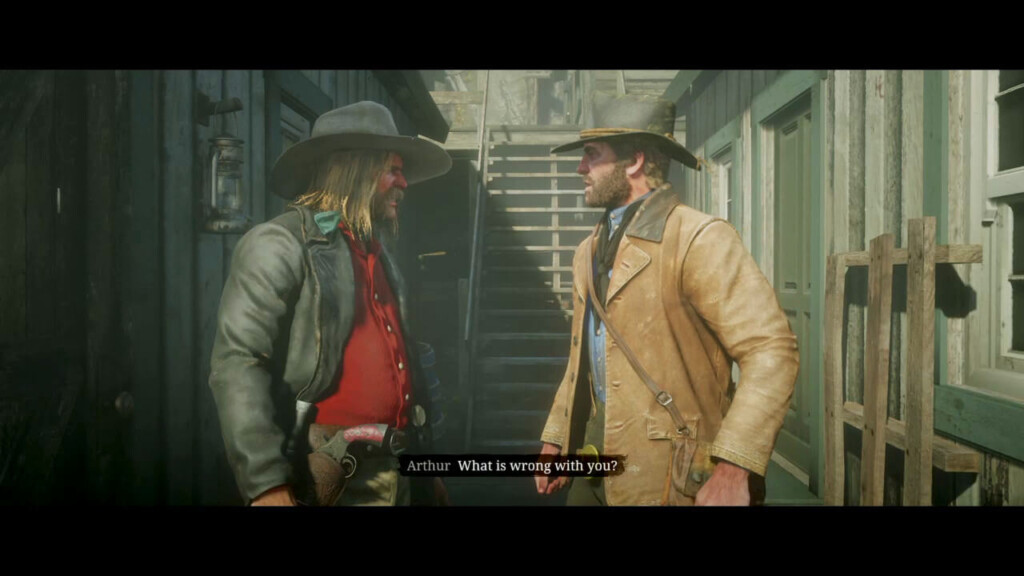
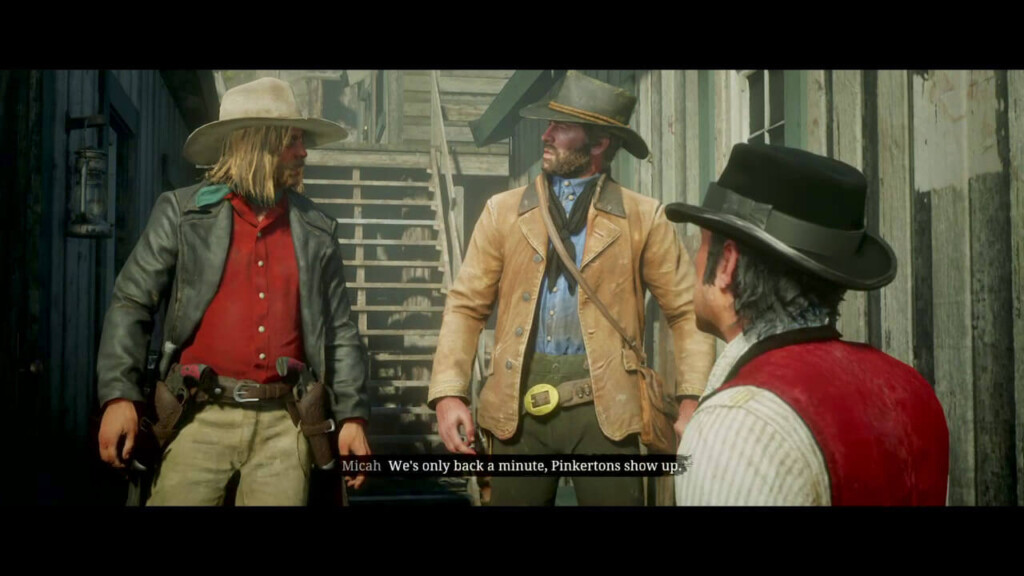
We also see the opposite-color outfits in the suits the two men wear during “Banking, the Old American Art.” Arthur wears a dark gray suit jacket (poorly fitted, a commentary on how badly Arthur fits into the “civilized” world) and black pants, a blue vest, a dark tie, and a white shirt. Micah wears a white suit jacket and white pants, a red vest, a light tie, and a black shirt. In fact, their nature as opposites is apparent from the first few scenes of “Outlaws from the West,” in which Arthur appears without a lantern — signifying his benighted state — and Micah, in a very similar shot, carries one, because he knows exactly who he is. (And because “Lucifer,” Satan’s onetime name, means “light-bringer.”)
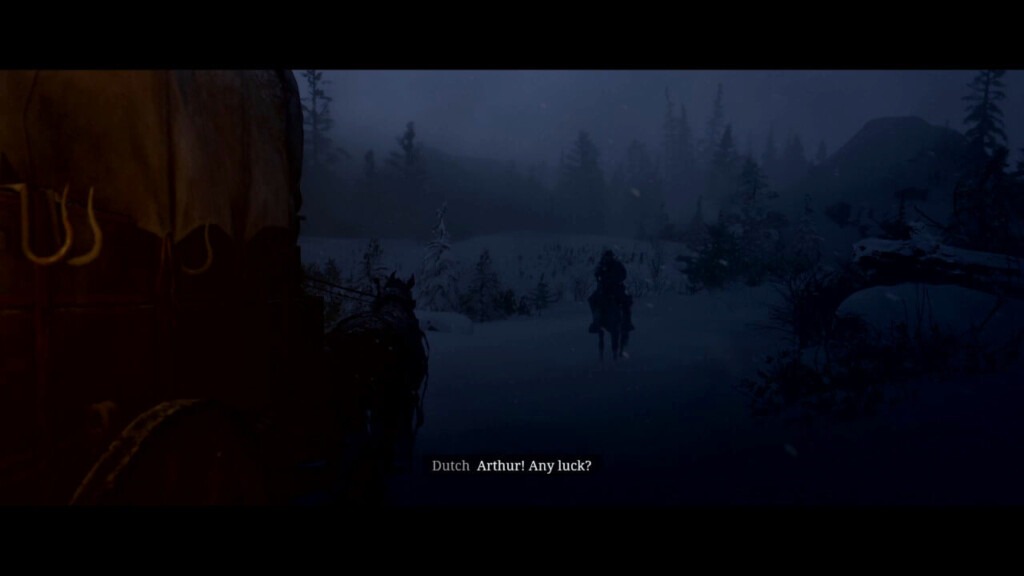
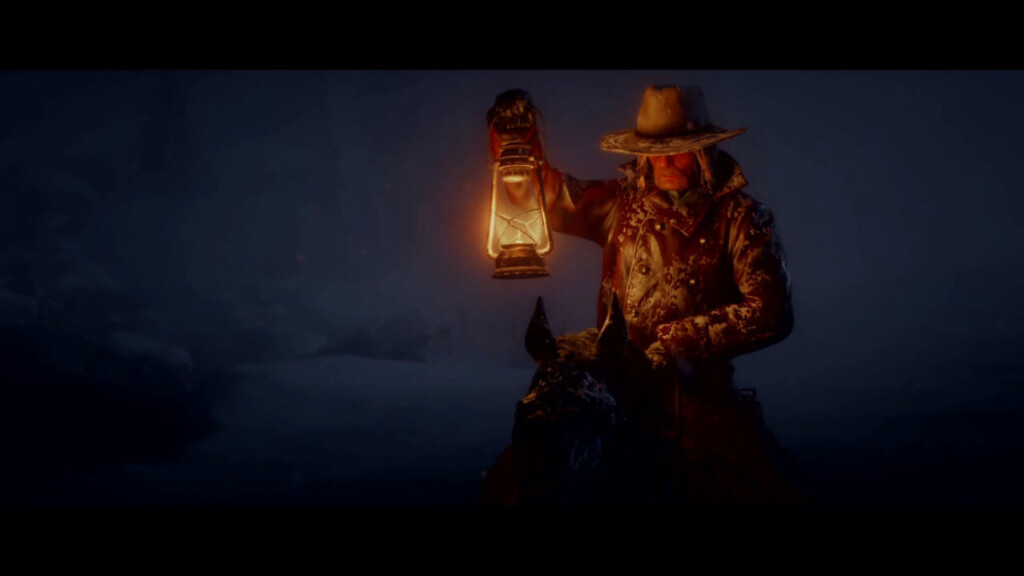
This shot from “An American Pastoral Scene” illustrates the concept well. The two men are in the same position, but mirrored, and the colors are inverted. Arthur is also quite likely to have a Palomino horse here (since the most affordable horses available when visiting the Valentine stable in “Exit, Pursued by a Bruised Ego” are Palomino), and Micah’s horse Baylock is black.
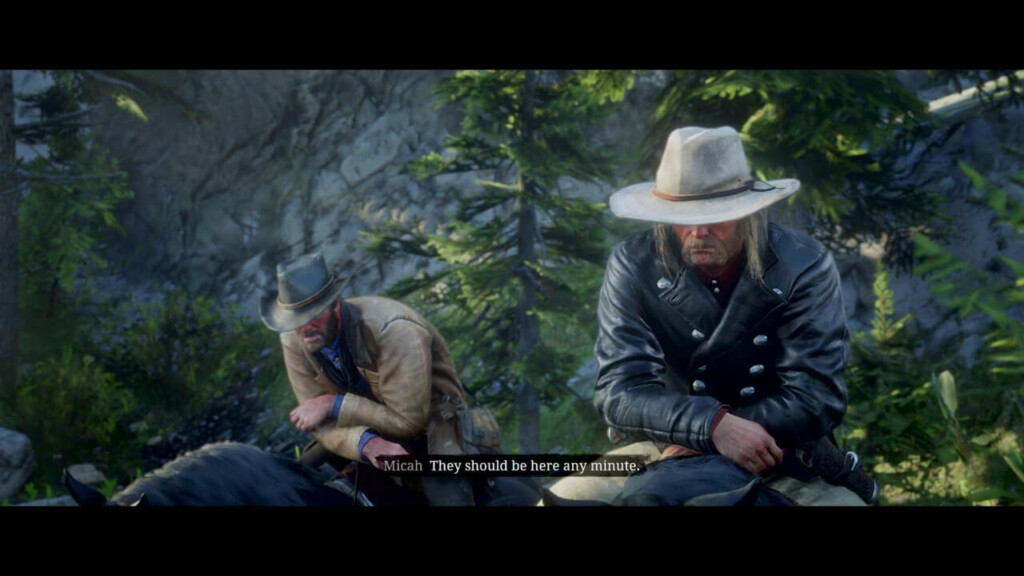
Their core principles are obviously so different they don’t need to be enumerated, but one of the more strongly-stated examples is that Arthur Morgan often speaks against taking revenge and Micah Bell has “Vengeance is Hereby Mine” carved into the barrel of one of his precious guns. While Arthur achieves the grail, Micah, in getting the Blackwater money, gains what we might call the anti-grail. To be concerned about wealth, in RDR2, is to be concerned about the wrong thing. Arthur ends up with what matters; Micah ends up with what does not.
All of this imagery offers signposts to Arthur’s real nature. If we’re ever confused about who Arthur really is, Micah is an opposite map: we only have to invert him, or put him backwards. Micah is scheming, cruel, and nasty; Arthur is sincere, kind, and caring.
- The Song of Songs, or Song of Solomon, is also alluded to in the mission title “Pouring Forth Oil.” ↩︎
New here? Visit the Table of Contents to read the essays in order, or the Index & TL;DR to explore the site by topic. New essays are published Wednesdays at 1 p.m. E.T./10 a.m. P.T. Sharing the site is always appreciated!
Bibliography
Expand to view sources.
- Houser, Dan, et al. “Red Dead Redemption II.” Rockstar Games, 2018.
- Malory, Sir Thomas. Le Morte Darthur. Edited by Helen Cooper. Oxford University Press, 1998.
